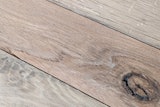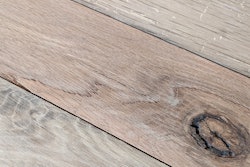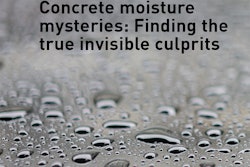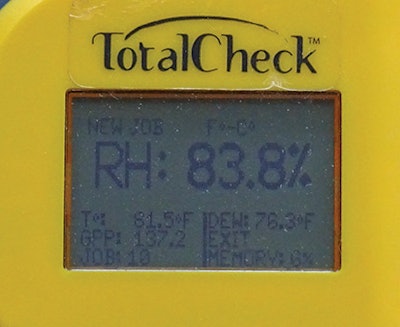
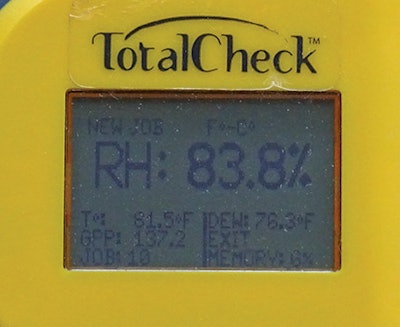
 By the time I inspected this job site, the buckling flooring had already been demo'd due to the tight construction timeline.
By the time I inspected this job site, the buckling flooring had already been demo'd due to the tight construction timeline.
The Issue
The architect specified a 5-inch-wide engineered red oak floor for a condominium. Toward the end of the project, buckling occurred in some of the units where the floor had been installed first. The GC questioned the installer, who responded that the floor was installed correctly. The GC then contacted a commercial wood floor inspector.
Roy: The Inspector's Observations
After inspecting the units where buckling had and had not occurred, I asked to see where installation was still in progress. In units where the floor was still being installed, my thermo-hygrometer said the RH was more than 83% and the temperature was 81 degrees Fahrenheit. Stacks of flooring were in the corner acclimating to these conditions. The flooring manufacturer's installation guidelines state the RH is to be maintained between 35–55% before, during and after installation. In units with buckling, the AC was off; in the units not buckling, the AC was still operational.
My conclusion was the installation did not comply with the manufacturer's guidelines, and the flooring clearly buckled due to excessive moisture conditions.
Blake: The Attorney's Analysis
In this case it is clear that the flooring was not installed in accordance with the manufacturer's guidelines. At first this may seem like an easy analysis: The installer is on the hook because he laid the flooring when humidity levels were too high. But is that the end of the story? While the GC can hold the subcontractor to the project schedule, the GC is also responsible to make the site ready for the work. In this case we do not know exactly what the GC and installer did or said before installation. However, based on a few assumptions, we could create three scenarios:
1. Nobody checked the site conditions. The installer will be on the hook because he had a duty to check the site conditions and alert the GC if they were not correct.
2. The installer checked the site conditions but said nothing. This is arguably worse, because the installer knowingly laid the flooring under the wrong conditions.
3. The installer checked the site conditions and told the GC about them, but the GC demanded the installer keep moving to avoid a delay. If the installer documented that the GC demanded the flooring be installed despite the conditions [see my article about liability waivers in the December 2018/January 2019 issue], then the GC should be responsible.
It should not be assumed that the GC bears no responsibility for these types of issues. However, the subcontractor must speak up, document the problems and request more time until the site conditions are correct in order to avoid liability.











